
 |
|||
| Sponsors websites: | |||
Boulders and Rip rock in the landscape.By Todd Layt Big rocks are a wonderful landscaping resource that when used correctly can make excellent structural retaining walls, or simple landscape features. When building structural walls, engineering constraints must be adhered to. They vary all over Australia, but don’t let regulation sway you from using rock, as it is often 50% the cost of other systems, such as RSS Concrete, Core filled blocks, interlocking blocks, Mattresses, or even sprayed on concrete. Finding good rock can be a challenge, but there are numerous suppliers to be found. There are also many uses for big rocks that do not need engineering approval, such as features, small retaining walls, and as edges around ponds and even small creeks. Gavin Turner from Boulder Wall constructions in Queensland is one of the few companies in Australia that specialises in building small and large retaining walls with boulders. They even have their own quarries that sell the rock to Landscapers. Gavin said ‘That one of the biggest problems is that unlicensed people attempt to make large structural walls out of boulders, and the walls later fail. It gives the industry a bad name.’ Unfortunately the regulations around Australia and even from Council to Council vary so much, and licensing varies as well, that you really need to check with authorities in your area. Some councils require a consulting Engineer to sign off on the structure when it is taller than 600mm, and others 900mm. Still, even with those heights, a series of boulder walls, stepping back can achieve a great structural result and a beautiful landscape with out the need for an Engineer in many regions. These type of retaining walls do not need footings, and can be very economical compared to most other retaining wall methods. Gavin said that ‘They have a license for Structural Landscaping restricted to retaining walls issued by the Building Services Authority, and use a consulting engineer to certify the structural walls’. When building big walls, it really does make sense to hire a professional, even if you have landscape qualifications. Maybe your qualifications do not allow for these large structures, which could lead to legal problems later, or possibly the professionals have better specialised equipment. Gavin said ‘they use skid steers to 35 tonne excavators with specially designed grabs made for placing boulders.’ If you hire someone with the right qualifications, also make sure they have a history of building large retaining walls. If you want to build large boulder retaining walls yourself, check that you have the right qualifications for your region. Not all work with Rip rock or Boulders is structural. Using big rock for features or to line the edges on ponds or creeks can result in spectacular landscapes. The rock defines the area, and creates a feature in its own right. The textures, colours, and unique shapes can be the highlight of the landscape. If you are trying to hide an area, then large feature rocks are not a good idea, as they will focus attention there. A large rock or series of rocks sitting in a planted area, or even in a turfed area, creates a focus point. Some rocks have unique shapes, and can even be used as seats, steping stones, or steps. If you want to build a small water channel, creek or pond, rip rock makes a wonderful material to line the edges with. Basically digging the channel first then placing the rock to line it allows for a quick construction. Digging in the bottom rocks makes it look more natural. If you are making a small creek, large boulders strategically placed can make good small waterfalls. Some concreting may be needed in these spots to focus water flow. When making small retaining walls, it is a good idea to build the bottom course first, then backfill with gravel before adding the next course. This will provide drainage, and give a good base to lay the next course above. On larger retaining walls line the back of the rock with a Geotextile, then backfill with gravel. A new machine called a Rock Slinger is now available in Brisbane, Sydney, and Melbourne, that can mechanically move large amounts of gravel into place, greatly reducing the labour content in moving gravel. There is even one now available that can blow 20mm gravel just like the bark blowers. On large retaining walls it is a good idea to have the areas drained well both above the wall and below. When placing the large rocks near each other or on top for the next course, you will hear experts give advice like, try to get good closure, or a nice face line, or an even face. Basically you want the gaps as small as possible, getting the rocks as flush with each other as possible. A good eye for choosing the right rock for each spot helps, but as with everything, practice makes you better. Whether a small or large structure is being built, rock selection is critical. First of all you need to choose the rock type, based on aesthetics and price. Size however is the most critical part. This generally depends on the size of machine you have. Basically you should order rocks that weigh no more than the safe working load of your machine. Remember, moving these rocks can be dangerous, and people have died doing it. Rocky, a great name for a rock supplier, says his company, R & K trading from Melbourne, recommend 400 to 600 kg rocks for Mini Skid steer loaders, 600KG to 1.2 tonne rocks for Skid Steer loaders, and from 400kg to 5 tonne rocks for Excavators, depending on the size of the machine. Suppliers like R & K, and Boulder Wall constructions will choose and deliver rocks that meet your specifications. Each region of Australia has different types of rock available. It depends on the local geology of the region. Transporting big rocks interstate is usually too expensive, so local sources are best. In Sydney, Sandstone dominates. Sydney Sandstone was generally formed with salt water, so it can be used in areas that have both fresh and salt water. In Brisbane, Sandstone was generally formed with fresh water, and is not good for saltwater areas, but okay for fresh water areas. In Sydney, you can buy Sandstone at really good prices from quarries and trucking companies. It costs me about $500 per bogie (12 Tonne) load for nice large feature rocks, which is cheaper than most other States. However, I can sometimes get sandstone boulders for as low as $100 per load, and even sometimes for free when building sites excavate sandstone for construction purposes. Contact haulage companies or construction companies, or run an advert in the Sydney Morning herald, and say sandstone rip rock needed. In Queensland you can buy 400kg to 600kg basalt rock from Neilsons Quarries (07) 32055599, or Boulder Wall Constructions (07) 3805 2666 www.boulderwalls.com.au sell small to really large boulders, some weighing up to 5 tonnes of Granite, Sandstone, Blue Rock and Bush Rock. They have their own quarries, and will size the rock to your needs. In Melbourne, R & K Trading Pty Ltd (03) 8761-6930 www.rktrading.com.au sell Honeycombe rock for $100 per cubic metre and Mud Rock and Granite for $200 per cubic metre. Perth has Limestone at lower prices, from between $80 and $140 per Cubic metre depending on the size the of load. Granite Boulders, Quartzsite known as Toodyay Stones, and Moss Rocks are all popular in Perth. You can find feature stones and boulders in Perth at www.creationlandscapesupplies.com.au Ph (08) 93357383. Direct Moss Rock Supplies in South Australia ship 12 tonne loads of Moss Rock or quarried Blue Stone for $80 per tonne. Phone 08 8538 7076. As with many other parts of the country, Moss Rock or Bush Rock is a dwindling resource, and there is only about 3 years of supply left in Adelaide of this type of rock. With Structural walls watch out for large trees and their roots, or even small trees that will become large trees, as the roots can move the rocks and make the structure unsound. Strappy Leaf plants are some of the best type of plants to install around structural boulder retaining walls, as they often cope well with the heat from the rock, which often reaches 70 Degrees Celsius on a 40 Degree day. They also need little maintenance, they hold the soil together well, and do not cause problems with the integrity of the structure. Tests have shown that some of the best strappy leaf plants around rock are, Lomandra plants such as Tanika, Katrinus Deluxe, KatieBelles, Wingarra, and a new one called Shara, and Dianella plants like Little Jess for most of Australia, and Little Rev and Revelation for non humid regions. Some Dianella and Lomandra types struggle with the extreme heat. On smaller walls, and even big walls, climbers such as Hardenbergia, and overhanging ground covers such as Myoprum, or small shrubs like Westringia work well. When choosing a turf type, avoid using fast running varieties such as Couch or Kikuyu near rock gardens, as you will have an edging nightmare. Buffalo Varieties are OK, with the best type being Palmetto, as it needs less Edging compared to most other types. The best lawn to use is Empire Zoysia. I have used it extensively around rock gardens, and find it very easy to control near edges, as it creeps slower. It is also very resistant of the heat. Rock Rules! Natural looking boulders or rip rock in the right hands create truly inspiring landscapes. Given the right plants are used to soften its appearance, it provides you with nature in your backyard. |
||||||
 |
||||||
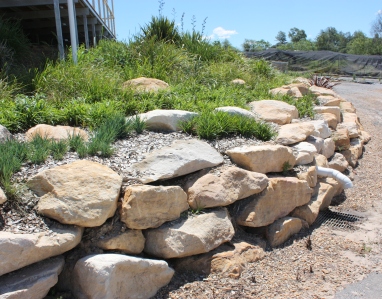 |
||||||
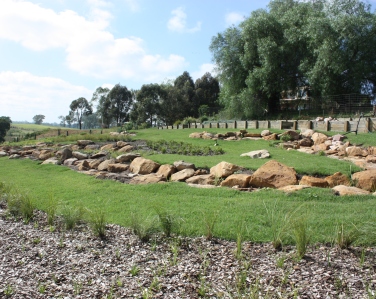 |
||||||
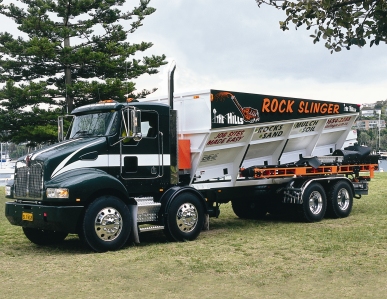 |
||||||
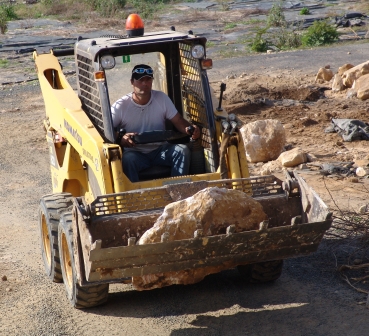 |
||||||
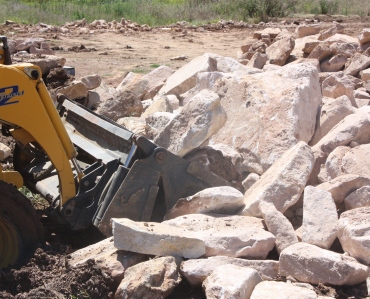 |
||||||
 |
||||||